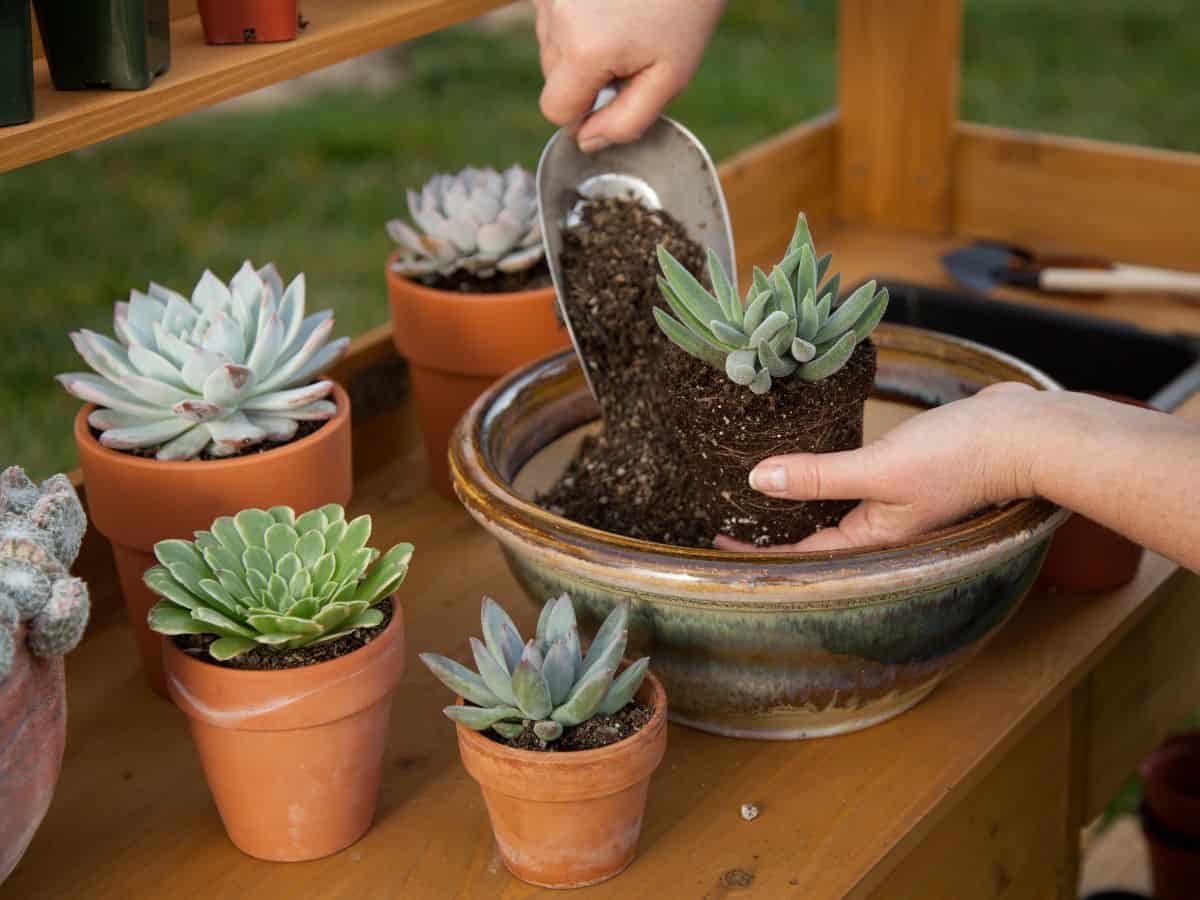
A common question - but one that deserves an answer! Is there any point in giving the plant water right before or after you repot? Which is better for the plant?
Let's get right to it. Here's the answer you're looking for.
Jump to:
What's the big deal about repotting?
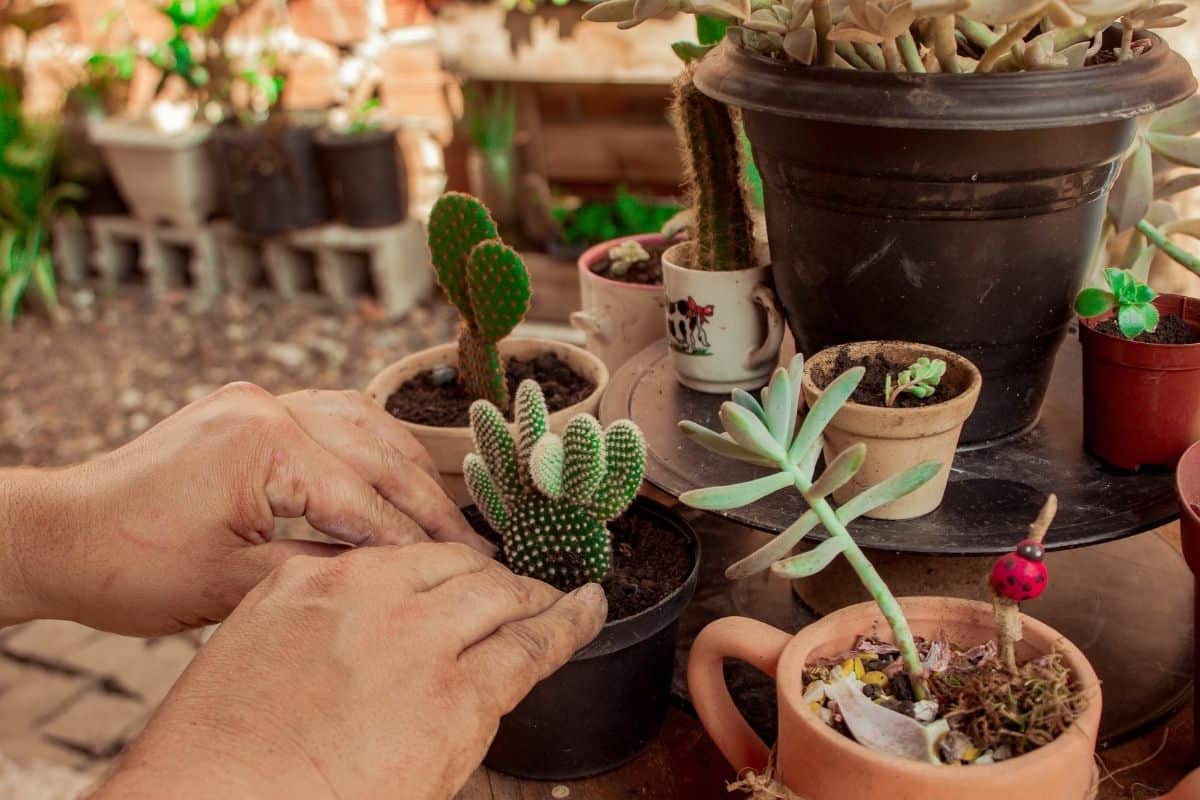
Mostly because of the inevitable damage you do to roots.
Repotting is a traumatic experience for any plant. They are (literally) being ripped from their home.
Plants spend a lot of energy establishing their root systems. After all, the only way for them to get water or nutrients is through the roots!
Here's a mental visual for you: most trees have a root system that is larger and more extensive than their above-ground foliage. That's a lot of roots!
While succulents don't have the same root-footprint (rootprint?) that trees do, their roots are no less valuable.
Why are the roots a big deal?

Caution: This next bit is science-y.
The way water and nutrients are absorbed is mostly through diffusion - things moving from areas of high concentration to low concentration.
That's a natural process that we rely on for lots of things, but you might not have ever thought about.
No products found.
Take tea, for example. Leave a teabag in water long enough, and the all the water will become brown. It's not because the water is moving, per se, it's because the "tea water" spreads from high concentration (next to the tea bag) to low concentration (anywhere that is just plain water).
That's how roots get water and nutrients. That's ALSO how that water gets from the roots the leaves! The leaves use up water during photosynthesis to make sugar and "uh oh, there's no more water!"
swisshhhh (this is the sound moving water makes)
Water moves up the stem to the leaves because there is a low concentration there.
Right, so now that we understand that, how do we get more water and nutrients. How do we get it faster?
By increasing your surface area! The more surface you have exposed to water, the more of it can move into the plant!
Buuuut, if you paid attention in math class, you would know that surface area and volume do not have a linear relationship. Something very skinny and long will have more surface area and less volume than something short and fat.
Gee, what is skinny and long? Hair, maybe?
Yes! And plants figured that out. That's why roots have "root hair". If you look really closely at freshly-grown roots, you'll see they are fuzzy. That's root hair!
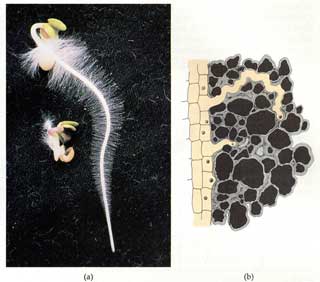
Root hair exponentially increases the surface area of a root, while only contributing minimal volume. Most of the water and nutrient uptake, therefore, occurs at root hairs.
Guess what, though? They're really fragile (and short-lived in some cases). Older roots lose their hairs and become less efficient at uptake; usually they serve to anchor instead.
So when you pull a plant out of the dirt to repot it, guess what happens?
Yup, you decimate the young. fresh roots and all their hairs.
Whoops.
You should water your plant after repotting.
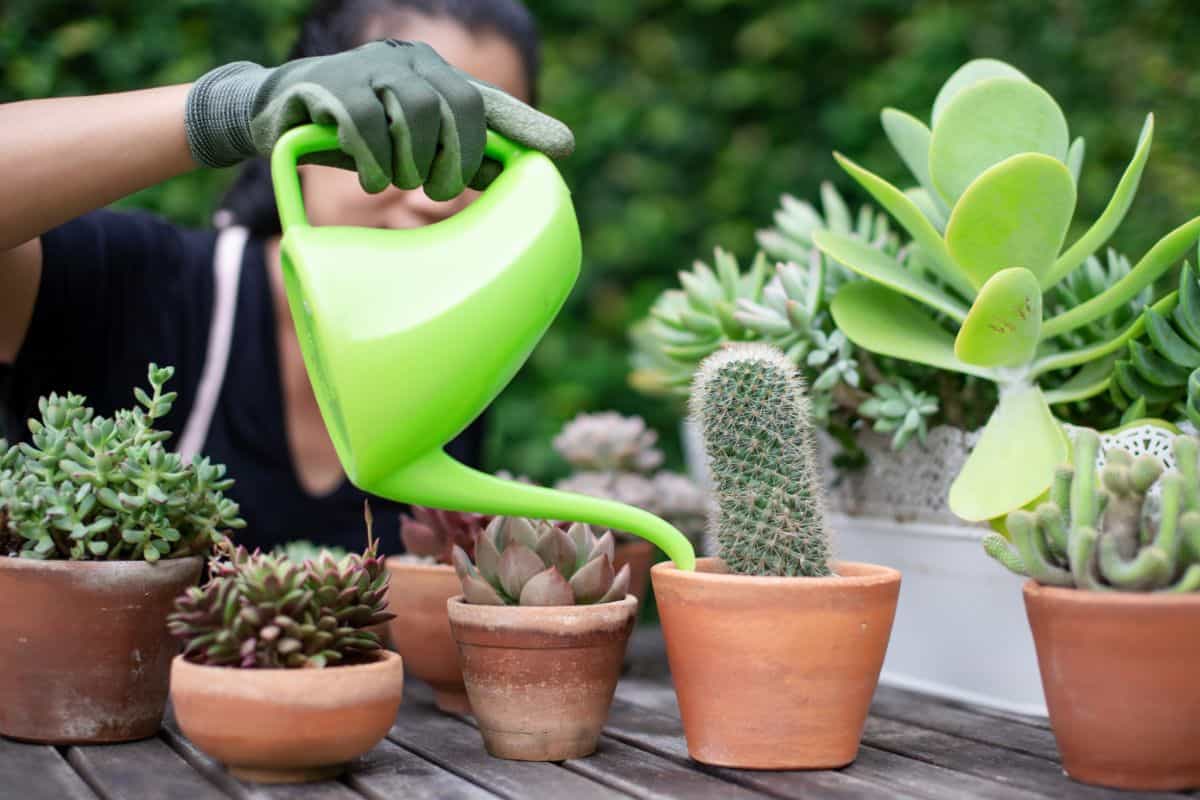
Sorry if I scared you there - it's not a huge deal. Bad stuff happens to plants all the time and they usually bounce back. That goes double for succulents.
One way to help them bounce back is to encourage new root growth. How do you do that? Well, water them!
Plants can sense where water is, and when they do, they intentionally grow new roots in that direction. Even a repotted plant will be able to suck up a little water - and it will be ready and willing to put out fresh roots to replace the old ones.
When watering after repotting, make sure you water it fully and deeply. You should always be doing this for succulents anyway.
There is a reason I'm emphasizing deep watering specifically.
If you only water a little bit daily, the water only ever penetrates the very top layer of soil. The roots of the plant, then, don't bother digging down. Why should they? The water is always at the top!
Frequent, shallow waterings promote weak root growth.
Water heavily, drench them, right after you repot. The water on the surface will evaporate relatively quickly, but moisture will still be trapped in the deeper soil... so that's where the roots will do.
You'll be encouraging deep, healthy roots that anchor the plant AND provide it more access to water and nutrients.
What about water before I repot?
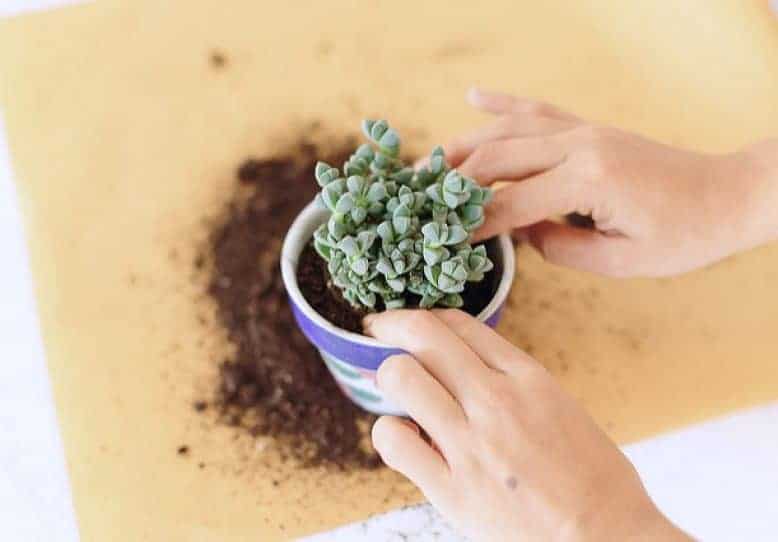
Honestly, there's no need.
Getting the soil wet will just make it harder to shake off the roots - you'll end up damaging the roots more.
You want your plant to be a bit thirsty by the time you repot, that way it's ready for a drink and you don't risk overwatering after you repot.
I always repot on watering day for that reason!
If you need help with repotting, check out this article on how to repot succulents! Need to know about the soil to pot it into? Look no further!


Luisa Fairhurst
Hi Patrick, greetings from Guatemala!
I'm a bit confused by your advice on watering succulents immediately after repotting...
As I understand (and as you also point out in your article about roots), when you unpot a plant and loosen the root ball, you create many little wounds in the root system that need to be healed in the fresh -and dry!-medium, for a week or two, before watering... otherwise you are inviting fungus or bacteria entering the wounds in the roots. What are your views on this? Thank you!
Alexis
How to I locate the question I just sent via this very same avenue?